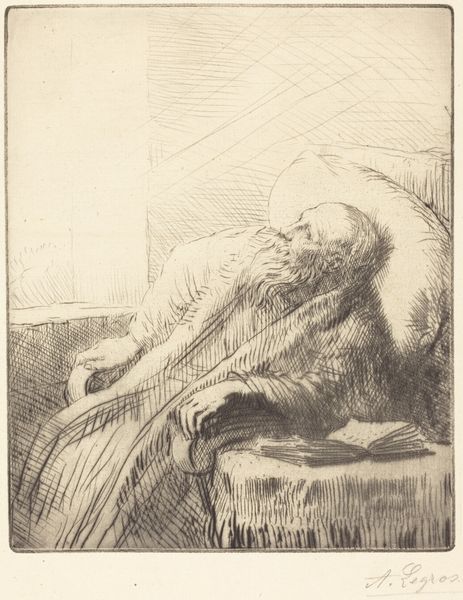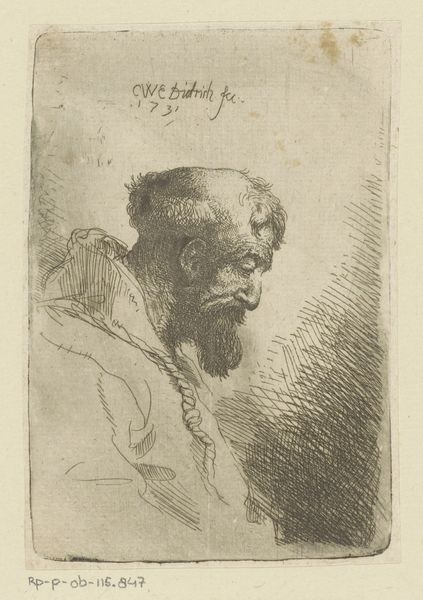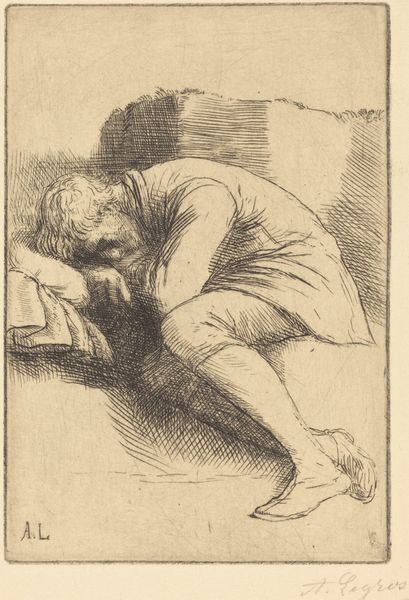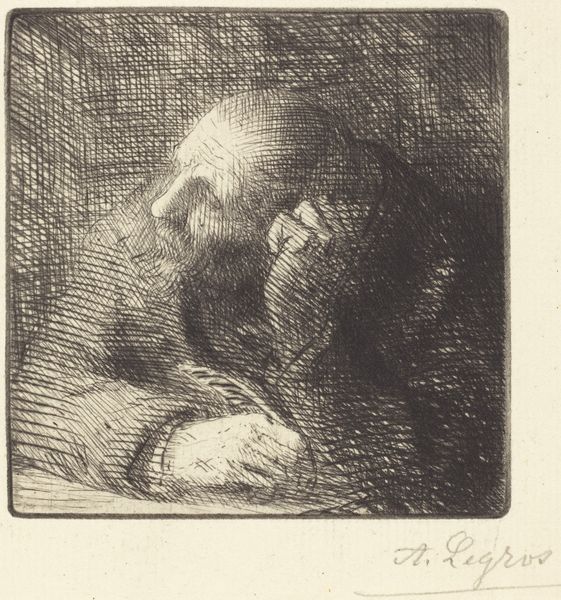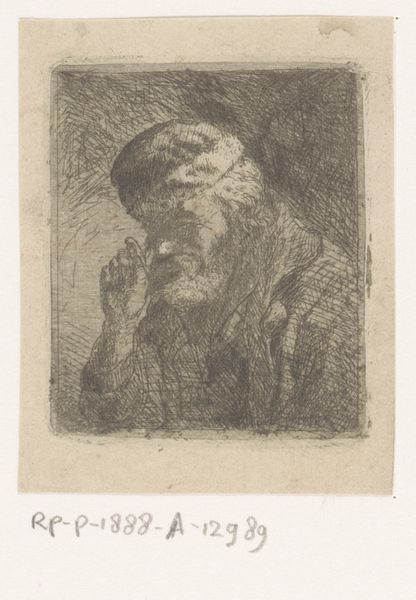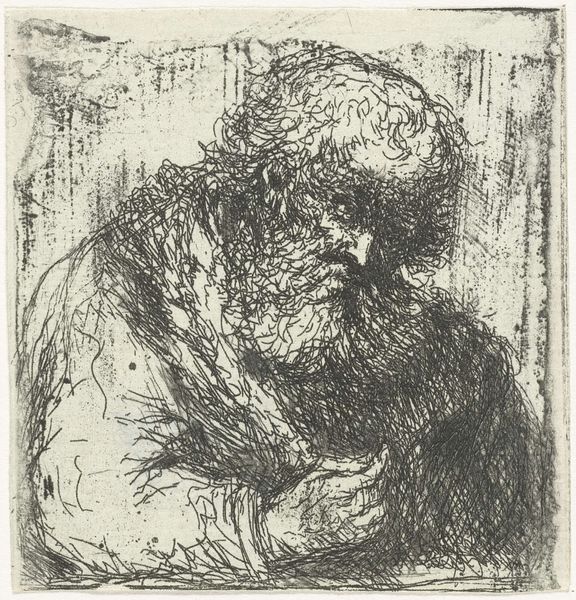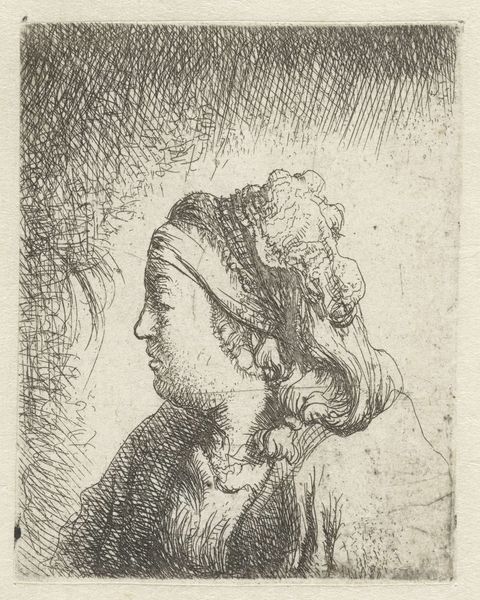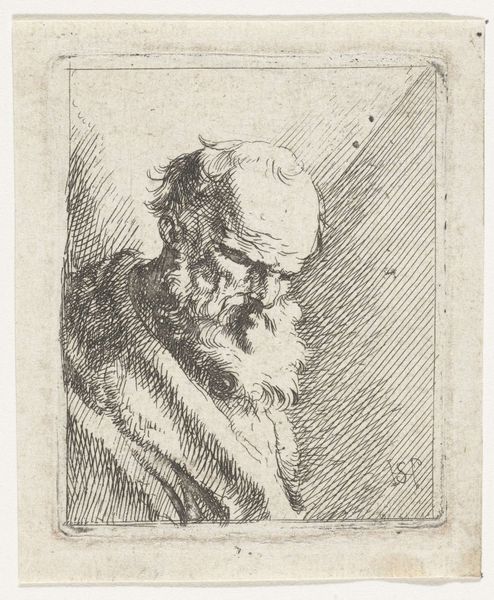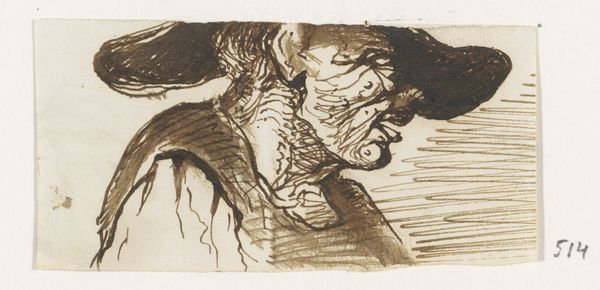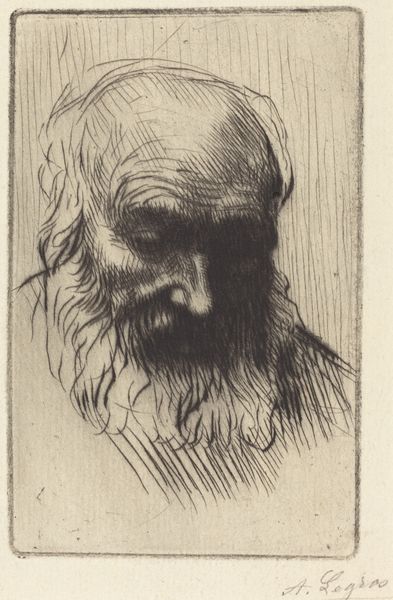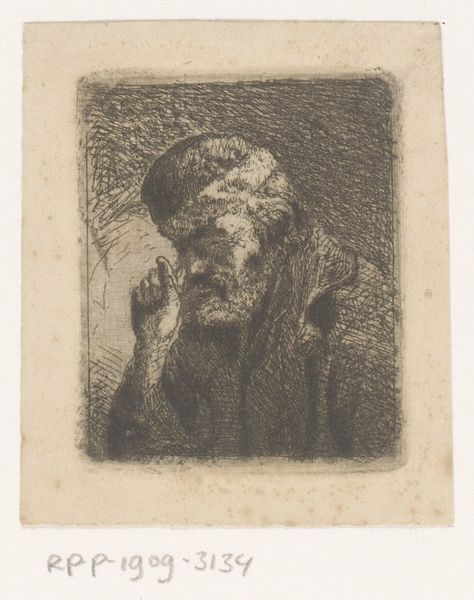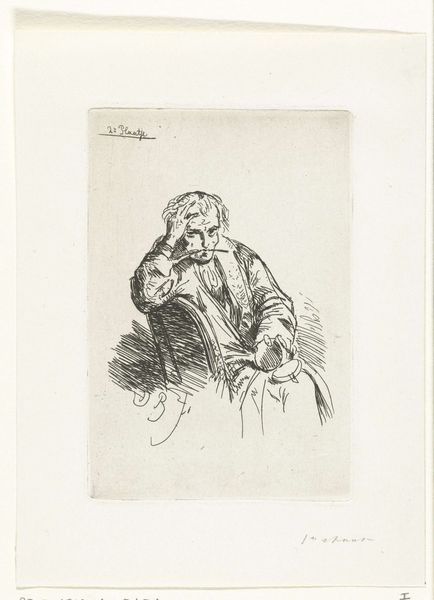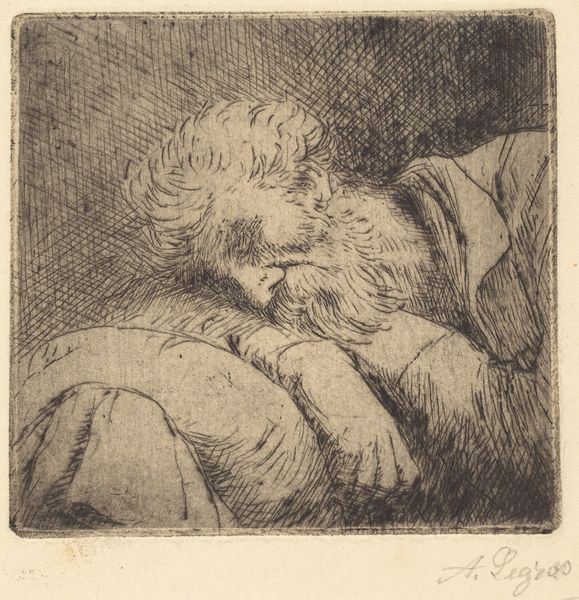
print, etching
#
portrait
#
ink drawing
#
baroque
# print
#
etching
#
figuration
#
portrait drawing
#
history-painting
Dimensions: plate: 10.8 x 8 cm (4 1/4 x 3 1/8 in.) sheet: 11.4 x 8.3 cm (4 1/2 x 3 1/4 in.)
Copyright: National Gallery of Art: CC0 1.0
Curator: Here we have Paul Troger's "A Philosopher," an etching dating from around the 1720s. What's your immediate impression? Editor: A study in monochrome. I’m drawn to the stark contrasts, the lines cutting across the surface creating a palpable sense of texture. It looks like very hard work to make an image in this fashion. Curator: Indeed. The philosopher’s downcast eyes and hand propping his head – the image is imbued with the weight of thought, almost melancholic, really embodying the intellectual burdens but also linking this lone figure with ancient traditions of knowledge and contemplation. Editor: I’m intrigued by the materiality of it all. Etching allows for intricate detail, but look at the areas of denser shading – they're achieved through meticulous, repetitive labor. One wonders how Troger approached such a physically demanding task, and who it might have been created for. Was it intended for private contemplation, or a wider dissemination of ideas? Curator: Good point, and let's not forget the iconographic conventions at play. The figure's beard symbolizes wisdom accumulated over time. The etching, being a print, could disseminate such ideals widely during the Enlightenment. This reminds viewers about intellectual virtues and their pursuit. Editor: Absolutely, but I'm equally concerned with the economics of it. Consider the paper, the ink, the press, the workshop where this etching might have been produced. The availability of this etching – its consumption, essentially – points to evolving networks of artistic production and trade during the 18th century. Curator: A compelling aspect, certainly. For me, this figure symbolizes timeless reflection and resonates deeply in the present age of information overload. We are left wondering what exactly this old philosopher is thinking about. Editor: True, but for me, its real meaning stems from understanding how it came to be – the social relations and industrial process that shaped its very existence as an artwork and historical artifact. Curator: It has been an engaging discussion seeing different meanings of this old portrait. Editor: Yes, an eye-opening moment to re-assess the context of its original creation.
Comments
No comments
Be the first to comment and join the conversation on the ultimate creative platform.
